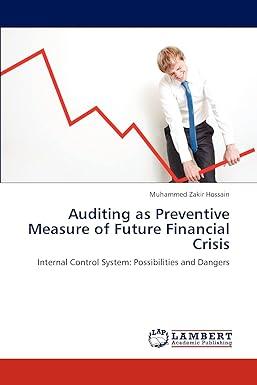Question
Stacy Persoff is the newly hired assistant of Kemp Industries, a regulated supplier of hardwood derivative products. The company sponsors a defined benefit pension plan
Stacy Persoff is the newly hired assistant of Kemp Industries, a regulated supplier of hardwood derivative products. The company sponsors a defined benefit pension plan that covers its 420 employees. On reviewing last year's financial statements, Persoff was concerned about some items reported in the disclosure notes relating to the pension plan. Portions of the relevant note follow:
Note 8 Pensions
The company has defined benefit pension plan covering substantially all of its employees. Pension benefits are based on employee service years and the employee's compensation during the last two years of employment. The company contributes annually the maximum amount permitted by the federal tax code. Plan contributions provide for benefits expected to be earned in the future as well as those earned to date. The following reconciles the plan's funded status and amount recognized in the balance sheet at December 31, 2018 ($ in thousands).
Actuarial Present Value Benefit Obligations:
Accumulated benefit obligation (including vested benefits of $318) $(1,305)
Projected benefit obligation (1,800)
Plan assets at fair value 1,575
Projected benefit obligation in excess of plan assets $ (225)
Kemp's comparative income statements reported net periodic pension expense of $108.000 in 2018 and $86,520 in 2017. Since employment has remained fairly constant in recent years, Persoff expressed concern over the increase in the pension expense. She expressed her concern to you, a three-year senior accountant at Kemp. "I'm also interested in the differences in these liability measurements." she mentioned.
Required:
Write a memo to Persoff. In the memo, do the following:
1. Explain to Persoff how the composition of the net periodic pension expense can create the situation she sees. Briefly describe the components of pension expense.
2. Briefly explain how pension gains and losses are recognized in earnings.
3. Describe for her the differences and similarities between the accumulated benefit obligation and the projected benefit obligation.
4. Explain how the "Projected benefit obligation in excess of plan assets" is reported in the financial statements.
Step by Step Solution
There are 3 Steps involved in it
Step: 1

Get Instant Access to Expert-Tailored Solutions
See step-by-step solutions with expert insights and AI powered tools for academic success
Step: 2

Step: 3

Ace Your Homework with AI
Get the answers you need in no time with our AI-driven, step-by-step assistance
Get Started


